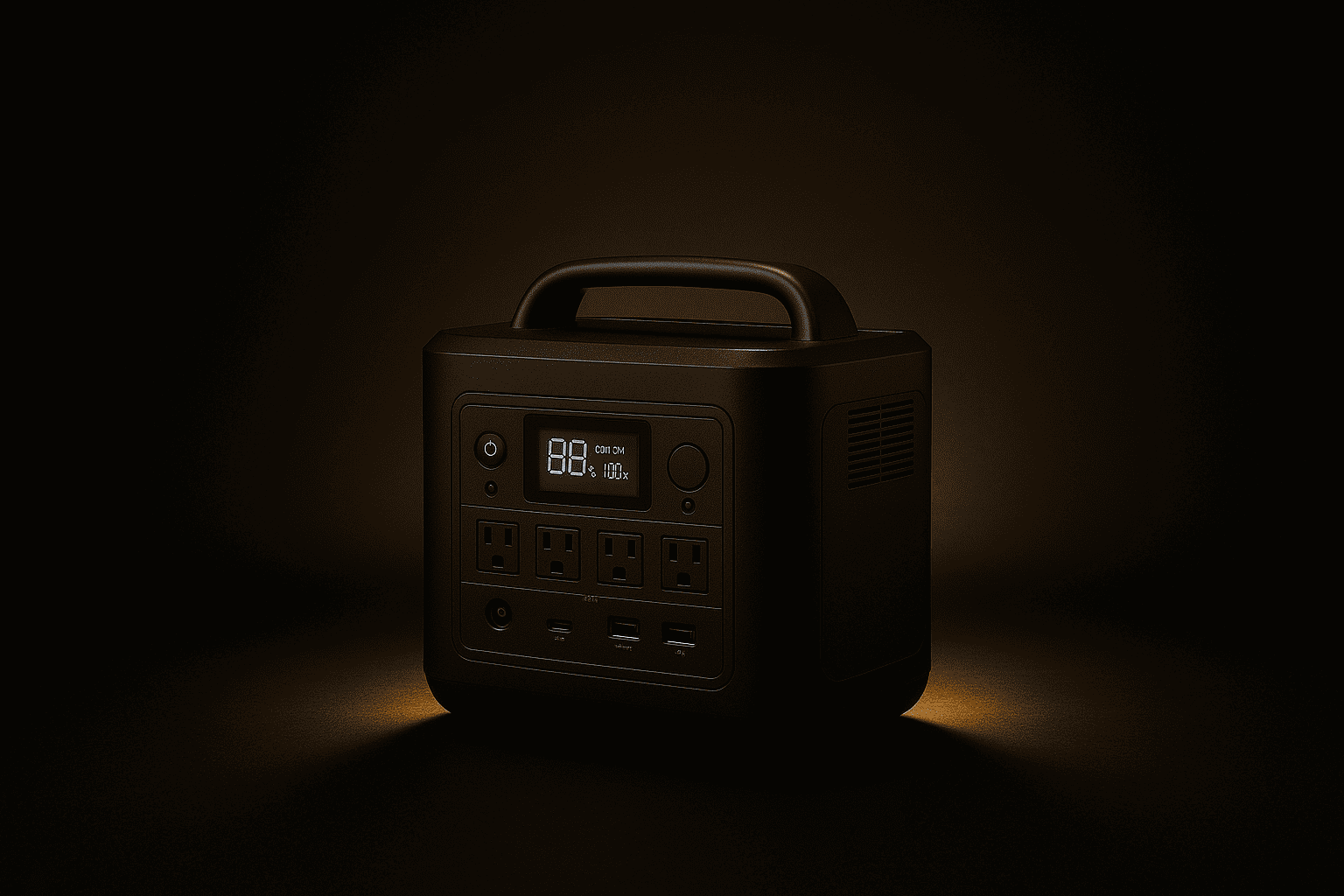
What is a Portable Power Station? Why You Need One
In today’s hyper-connected world, access to reliable power is essential for both daily life and unexpected situations. Whether you’re camping in the wilderness, working remotely in a remote location, or facing a sudden power outage at home, the demand for portable, on-demand electricity is at an all-time high. A portable power station is a game-changing solution that delivers clean, quiet, and versatile power wherever you need it.
This ultimate guide will break down what portable power stations are, explore their indispensable benefits, and provide practical advice on choosing the right one for your unique needs, whether you’re preparing for emergencies or enhancing your outdoor adventures.
What Exactly Is a Portable Power Station?
Picture a powerful, oversized battery capable of charging not just your phone but also running small appliances like a mini-fridge or power tools. That’s the essence of a portable power station—a rechargeable, battery-powered energy source designed to store and deliver electricity on demand. Unlike traditional gas generators, which are noisy and emit harmful fumes, portable power stations are silent, eco-friendly, and safe for indoor use.
Think of it as a supercharged power bank with far greater capacity and versatility. While a typical power bank might charge your smartphone a few times, a portable power station can keep laptops, medical devices like CPAP machines, or even a coffee maker running, making it ideal for a wide range of scenarios.
For example, a 500Wh power station can charge a smartphone (10Wh) about 50 times or run a 50W fan for 10 hours, showcasing its ability to handle both small and moderate power needs.
Key Components of a Portable Power Station
Portable power stations combine advanced technology to deliver reliable power in a compact form. These components work together to store, convert, and distribute energy efficiently, ensuring versatility for various applications.
- Battery: Typically uses lithium-ion or LiFePO4 batteries, offering high efficiency and up to 3,000 charge cycles for LiFePO4.
- Inverter: Converts DC power to AC, powering household appliances like microwaves or TVs.
- Charge Controller: Regulates charging to protect the battery and extend lifespan.
- Multiple Output Ports: Includes AC outlets, USB-A, USB-C, and 12V DC ports for diverse connectivity.
These components make power stations user-friendly and adaptable for emergencies, camping, or daily use.
How Does a Portable Power Station Work?
The operation is straightforward, making power stations accessible to all users. The process involves charging, storing, and delivering power, with flexible input and output options to suit different needs.
- Charge the Power Station: Use a wall outlet (1-2 hours with fast charging), car charger, or solar panels for eco-friendly recharging.
- Store Energy: The battery holds electricity with minimal loss, ready for use anytime.
- Power Your Devices: Plug devices into AC, USB, or DC ports; the inverter converts power as needed.
A 1000W output power station can run a 700W microwave for about an hour, while a 100W solar panel can charge a 500Wh unit in 5-7 hours.
Why You Need a Portable Power Station
Portable power stations are essential for modern lifestyles, offering solutions for emergencies, outdoor activities, and daily tasks. Their versatility makes them a valuable investment for anyone seeking reliable power.
1. Reliable Emergency Backup Power
Power outages from storms or grid failures are increasingly common. A portable power station ensures you stay powered, maintaining critical functions during emergencies.
In 2023, California residents used power stations during storms to keep devices and appliances running, proving their value in crisis situations.
- Charge phones and laptops for communication and work.
- Power medical devices like CPAP machines.
- Run fans, lights, or mini-fridges to preserve food.
2. Enhanced Outdoor Adventures
Campers, RV travelers, and adventurers benefit from portable power stations, which bring modern comforts to remote locations without noise or fumes.
A Yosemite camping family used a power station for a fridge and devices, enhancing their trip’s comfort.
- Power camp lights, projectors, or coffee makers.
- Charge laptops, cameras, or drones for remote work.
- Operate silently (<30dB) for peaceful camping.
3. Clean, Green, and Quiet Energy
Portable power stations offer eco-friendly advantages over gas generators, supporting sustainable living with minimal environmental impact.
Solar charging with a 200W panel can power a 1000Wh station in 5-6 hours, ideal for off-grid use.
- Zero emissions for safe indoor use.
- Quiet operation (<30dB) for minimal disturbance.
- Solar compatibility for renewable energy.
4. Versatility for Everyday Life
Beyond emergencies and camping, power stations support daily activities, enhancing convenience and reducing costs.
A Texas homeowner saved $50 monthly using a solar-charged station during peak hours.
- Power tools for DIY projects without cords.
- Run speakers or grills for events.
- Save on electricity with solar or off-peak charging.
Portable Power Station vs. Traditional Generator
Portable power stations outperform gas generators in safety, convenience, and eco-friendliness, as shown below:
| Feature | Portable Power Station | Traditional Gas Generator |
|---|---|---|
| Power Source | Rechargeable Battery (Lithium-ion, LiFePO4) | Gasoline, Diesel, Propane |
| Emissions | None (Safe indoors) | Harmful fumes (Outdoor only) |
| Noise Level | Extremely Quiet (<30dB) | Loud (60-90dB) |
| Maintenance | Low (Minimal upkeep) | High (Oil, filters, spark plugs) |
| Portability | Lightweight & Compact | Heavier, often requires wheels |
| Fuel Costs | None (Solar option) | Ongoing fuel costs |
| Startup | Instant On/Off | Pull/electric start, warm-up time |
Portable power stations are safer and more convenient, making them ideal for modern power needs.
How to Choose the Right Portable Power Station
Selecting the right power station involves balancing capacity, output, and features to match your needs. Consider these factors:
- Capacity (Wh): Small (100-300Wh) for phones; medium (300-1000Wh) for camping; large (1000Wh+) for fridges. Add 20% buffer for efficiency.
- Output Power (W): Ensure continuous wattage supports devices (e.g., 1000W for a 700W microwave).
- Battery Chemistry: Lithium-ion for affordability; LiFePO4 for longevity and safety.
- Portability: Lightweight (10-20 lbs) for camping; wheeled units (50+ lbs) for home.
- Charging Options: Fast AC, solar with MPPT, or car charging.
- Ports: Multiple AC, USB, and DC ports for versatility.
- Brand Reputation: Choose trusted brands like Anker or EcoFlow with strong warranties.
Pro Tip: List devices’ wattage (e.g., laptop: 50W), estimate usage hours, and select a model with 20% extra capacity.Use our tool Power Station Matchmaker to help you!
Top Portable Power Stations for 2025
These top-rated portable power stations offer reliable solutions for blackouts, camping, and more. Find the perfect model for your needs.
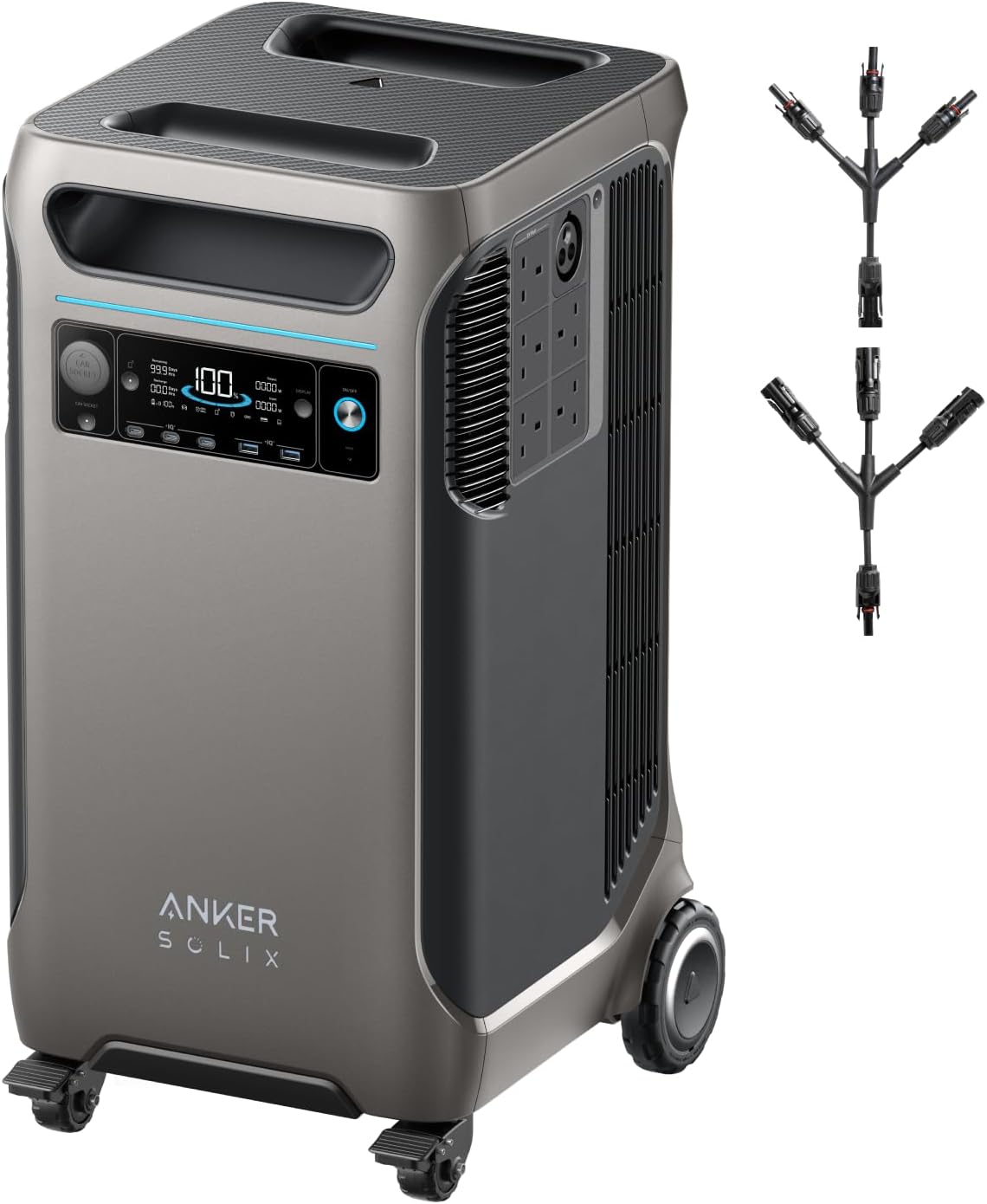
Anker SOLIX F3800 (Premium Pick)
Boasting a 3840Wh capacity and smart app control, this powerhouse runs entire homes during outages.
View on AmazonDisclosure: As an Amazon Associate, we may earn a commission at no extra cost to you.
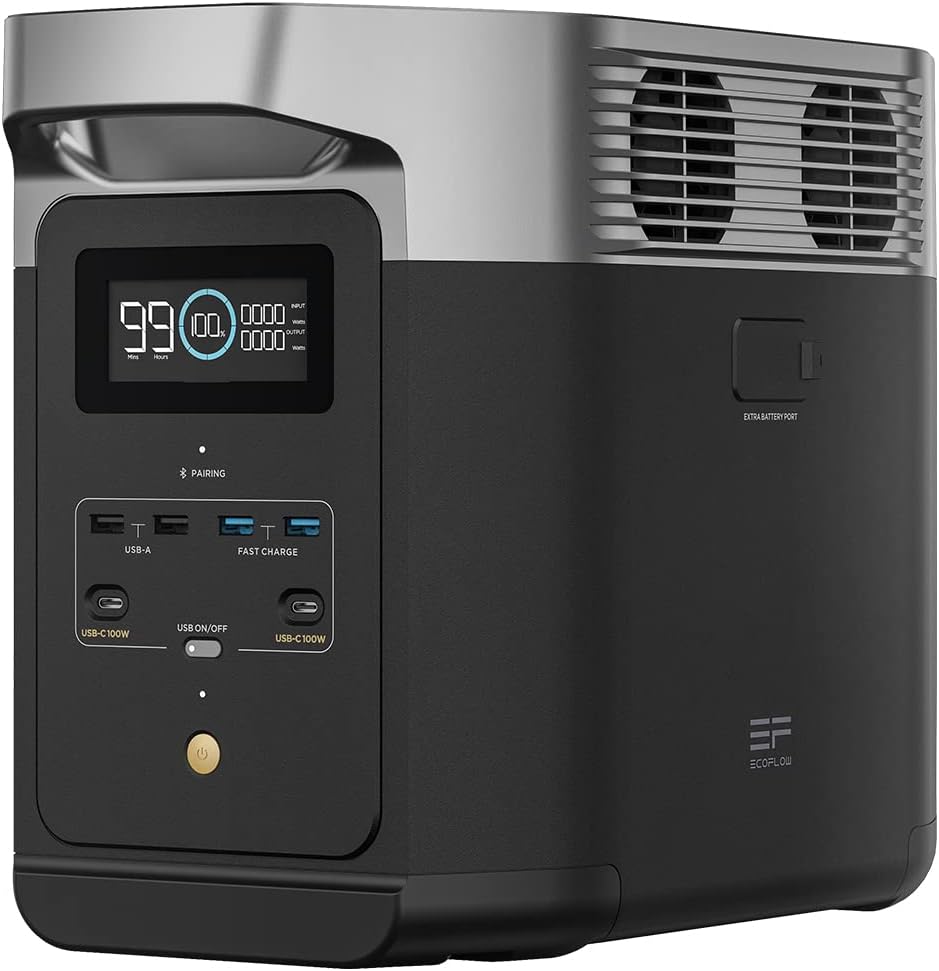
EcoFlow Delta 2 (Top Value)
With 1024Wh and fast charging, it’s a budget-friendly choice for reliable household backup.
View on AmazonDisclosure: As an Amazon Associate, we may earn a commission at no extra cost to you.
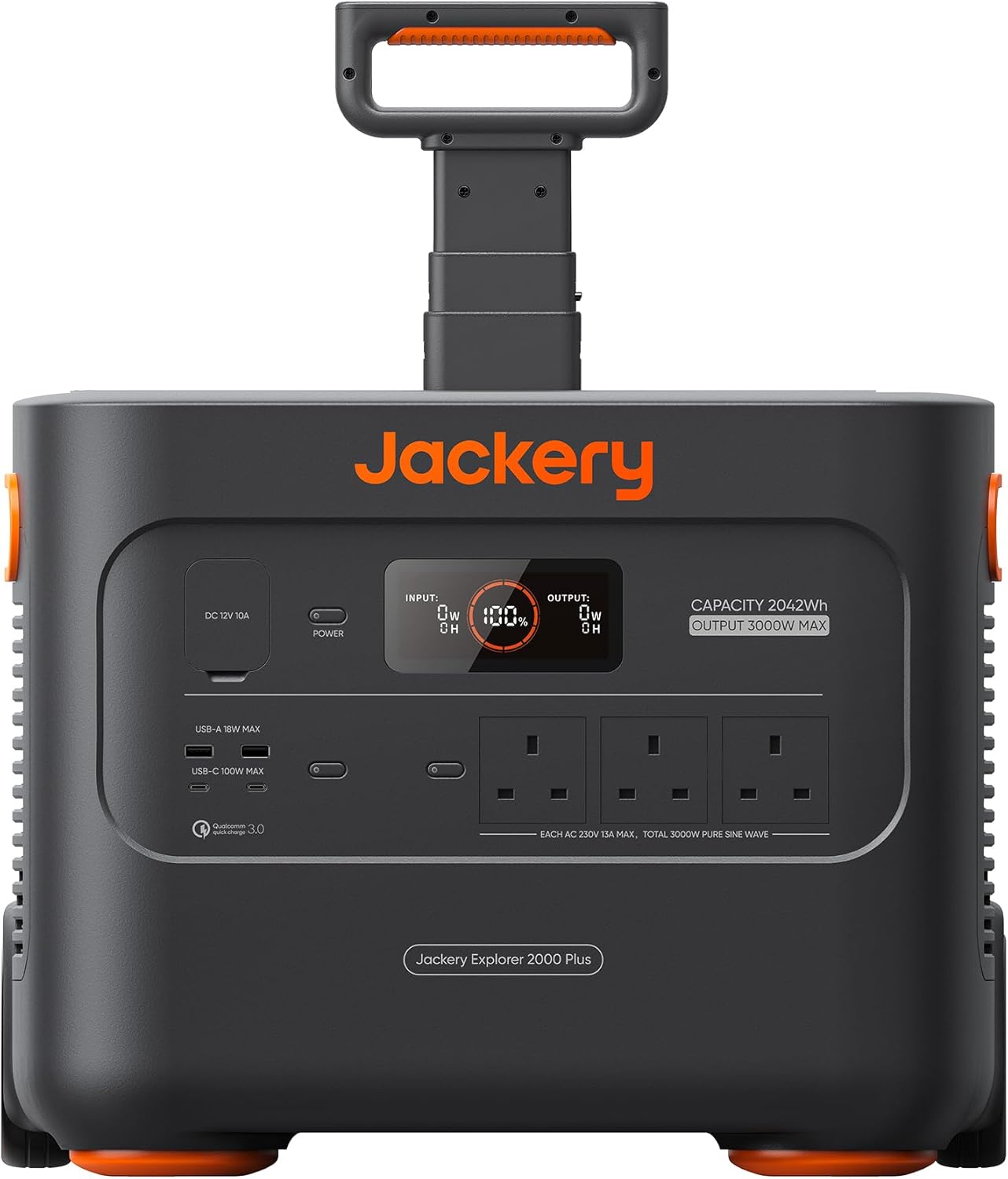
Jackery Explorer 2000 Plus (Best Budget)
Delivers 2042.8Wh for cost-effective power during short to medium outages.
View on AmazonDisclosure: As an Amazon Associate, we may earn a commission at no extra cost to you.
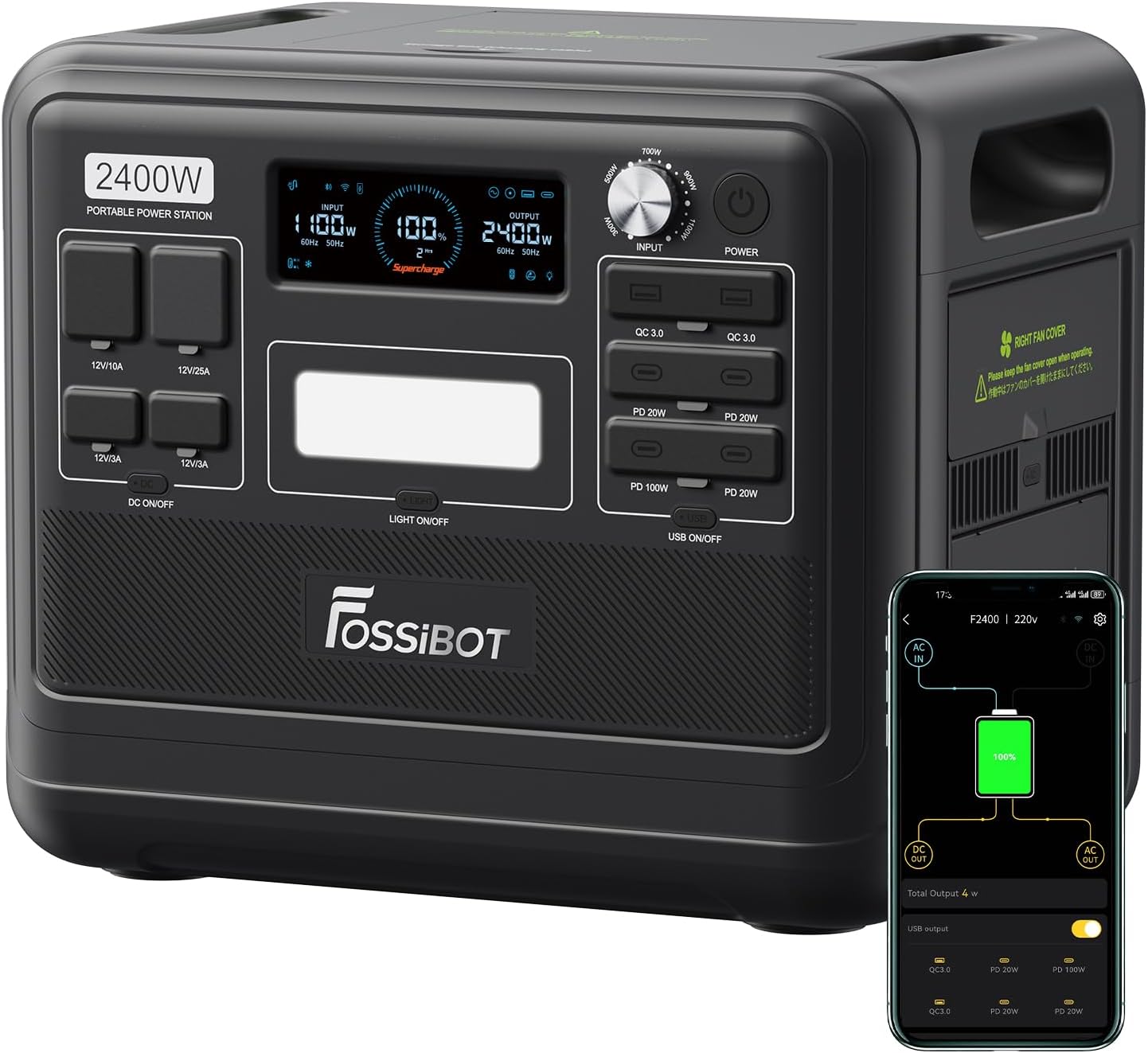
FOSSiBOT F2400 (Hidden Gem)
Offers 2048Wh and 2400W output, a standout for savvy buyers seeking value.
View on AmazonDisclosure: As an Amazon Associate, we may earn a commission at no extra cost to you.
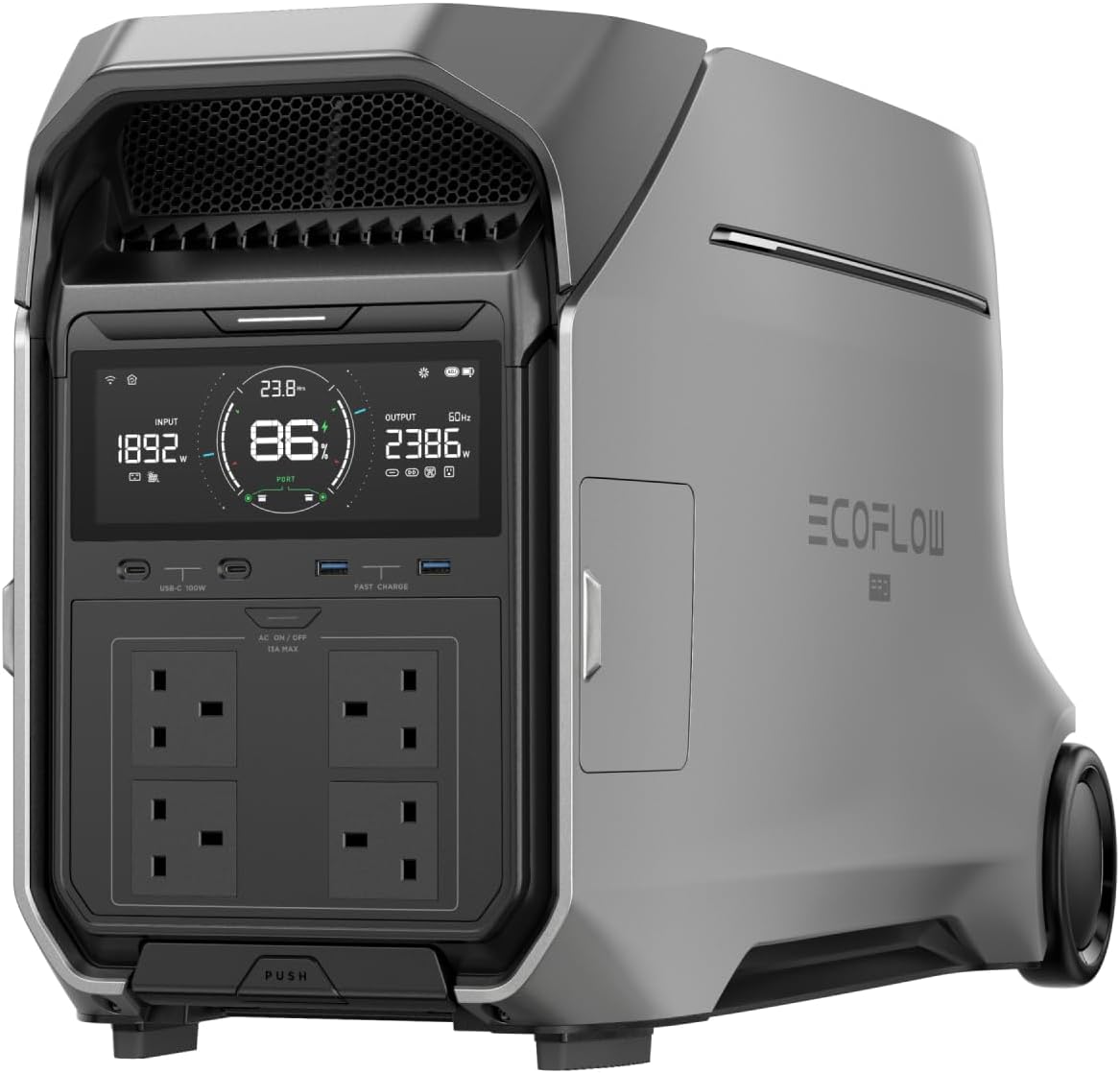
EcoFlow Delta Pro 3 (Practical Pick)
With 4096Wh and user-friendly features, it’s perfect for reliable home backup.
View on AmazonDisclosure: As an Amazon Associate, we may earn a commission at no extra cost to you.
Frequently Asked Questions
Explore answers to common questions about portable power stations to make an informed decision.
Can a portable power station run a refrigerator?
Yes, models with 1000Wh+ capacity and 1000W+ output, like the Anker SOLIX F3800 or EcoFlow Delta Pro 3, can run a refrigerator (150-700W) for several hours, depending on the fridge size and power station specs.
Can a portable power station power my home during a long blackout?
High-capacity models like the Anker SOLIX F3800 (3840Wh) or EcoFlow Delta Pro 3 (4096Wh) can power essential home appliances (e.g., fridge, lights, router) for days. Pair with solar panels for extended use, but calculate total wattage needs to ensure compatibility.
How long does it take to charge a portable power station with solar panels?
Charging time depends on panel wattage and sunlight. A 200W solar panel can charge a 1000Wh power station, like the EcoFlow Delta 2, in 5-7 hours under optimal conditions. Larger units like the Anker SOLIX F3800 (3840Wh) may take 19-24 hours with a 200W panel.
Can a portable power station power my RV air conditioner?
RV air conditioners (1000-2000W) require high-capacity power stations with 2000W+ output, like the Anker SOLIX F3800 or EcoFlow Delta Pro 3. A 3840Wh unit can run a 1500W AC for about 2-3 hours. Check your AC’s wattage and consider solar recharging for extended use.
What’s the difference between lithium-ion and LiFePO4 batteries in power stations?
Lithium-ion batteries are lighter and cheaper but last 500-1000 cycles. LiFePO4 batteries, used in models like the EcoFlow Delta 2, offer 3000+ cycles, better safety, and stability, ideal for frequent or long-term use.
How do I safely store a portable power station when not in use?
Store in a cool, dry place (15-25°C), away from moisture or extreme temperatures. Keep at 50-80% charge, recharging every 3-6 months to maintain battery health. Follow manufacturer guidelines for models like Jackery or FOSSiBOT.
Conclusion: Empower Your Life with Portable Power
A portable power station is more than a gadget—it’s a gateway to freedom, preparedness, and sustainability. Whether you’re protecting your home from blackouts, elevating your camping adventures, or powering daily tasks with clean energy, these devices offer unmatched versatility and convenience. By choosing a model that aligns with your power needs, portability preferences, and budget, you can unlock countless possibilities to stay powered anywhere, anytime.
Embrace the future of portable power and transform the way you live, work, and explore.
Looking for a different Power Station? Find Your Perfect Power Solution!
From unexpected outages to remote adventures, portable power stations offer the reliable energy solution you need to keep all your essential devices running.
Find Your Power Station